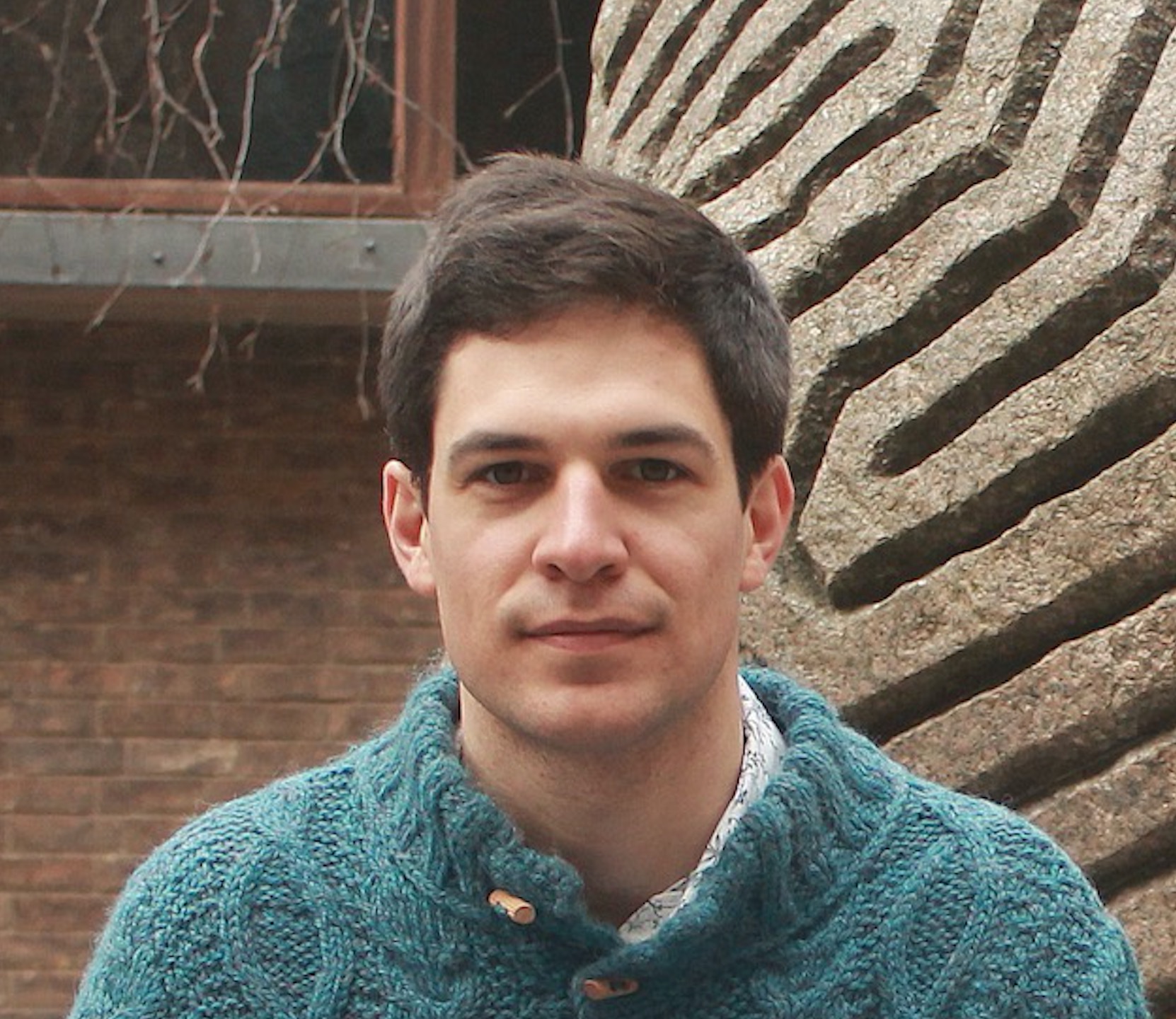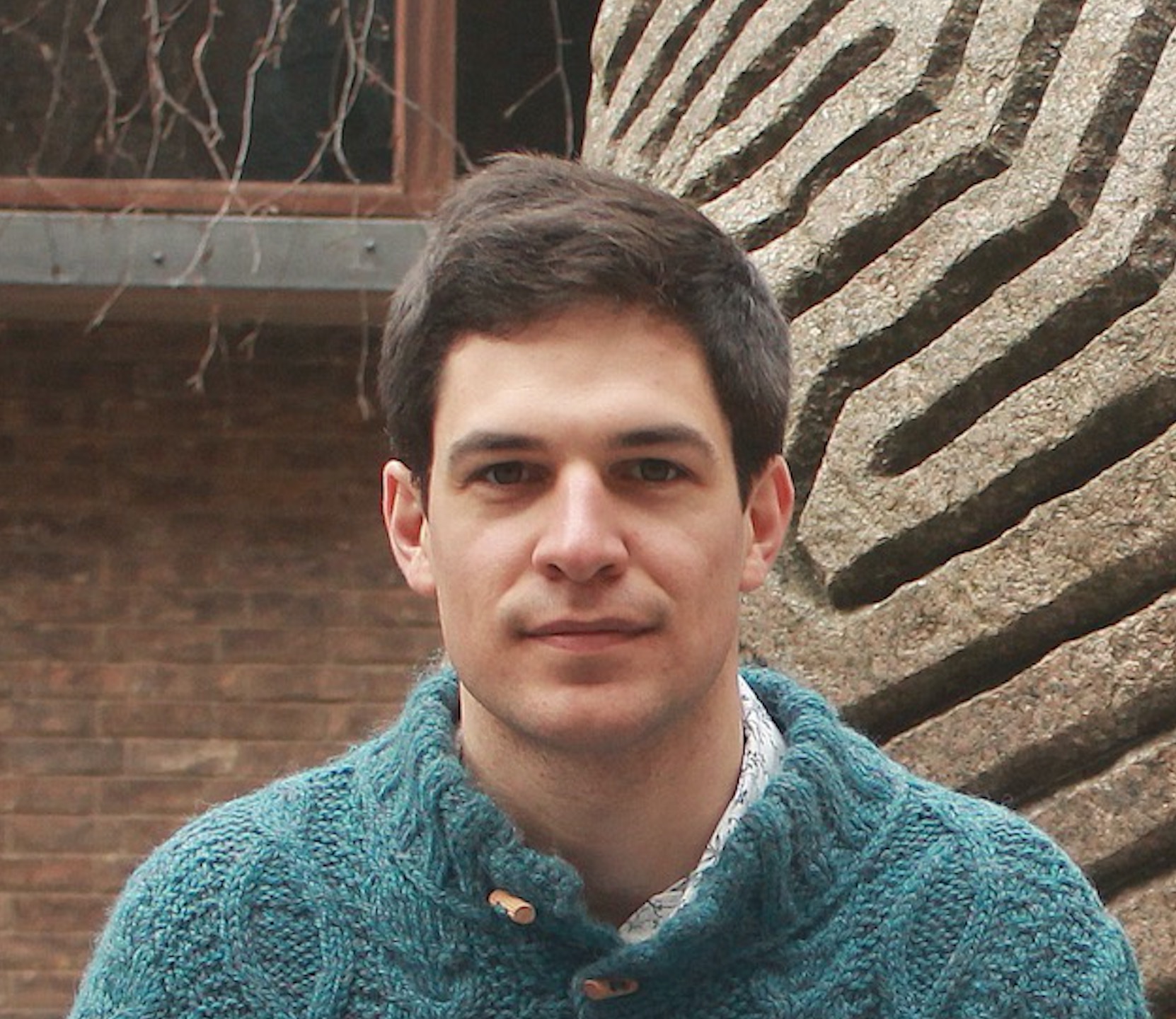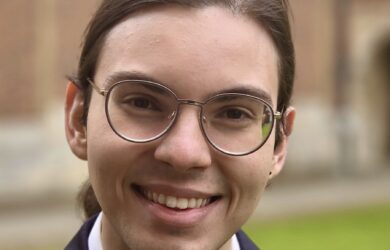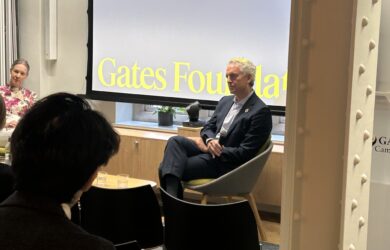
Frantisek Vasa's research focuses on understanding how different parts of the brain are linked and what happens when those connections break down.
The healthy brain needs to prune some connections in order for others to thrive.
Frantisek Vasa
Adolescence is a critical time for the development of the human brain. The brain undergoes a lot of change in adolescence and it is when a lot of psychiatric disorders such as anxiety, depression and schizophrenia emerge. This is presumably the result of abnormal development which may be caused by a range of internal or external factors.
Frantisek Vasa [2014] is interested in how different areas of the brain are linked and communicate with each other and what the impact is on brain function, cognition and disease when the connections break down. To understand disease, he has been studying healthy brain development.
For his PhD, for which he received a Gates Cambridge Scholarship, Frantisek designed a new method to study changes in connectivity in the adolescent brain using scans of brain structure. His research showed how the healthy adolescent brain strengthens certain connections while pruning others. "It's like the extra branches of a tree. The brain needs to prune some connections in order for others to thrive," he says.
Describing the brain as "the next big frontier", he says magnetic resonance imaging (MRI) combined with powerful data analysis methods allows researchers to harmlessly study human brains in unprecedented levels of detail.
His research is mentioned in the current issue of Research Horizons magazine.
Language shock
Frantisek came to the field of brain development through a curiosity for physics and maths. Born in Prague in 1989, the year of the Velvet revolution, his family moved to Geneva when he was nine after his mother took up a job at the European Broadcasting Union. Frantisek attended the International School of Geneva. As he didn't speak French or English, the move was a "language shock" for him and he carried a dictionary around with him for the first year. His language struggles meant he threw himself into maths, which he was already good at. That led onto an enthusiasm for science.
Frantisek knew he wanted to do something related to science or engineering when he finished school, but he wanted to keep his options open so he applied to Cambridge to study Natural Sciences. He didn't get accepted so he started a physics degree at the Swiss Federal Institute of Technology in Lausanne (EPFL).
He was only there for a few weeks, however, when he was involved in an incident which resulted in post-traumatic stress. This gave Frantisek his first personal taste of mental health issues and led him to drop out of his course. After recovering he reapplied to university in the UK, this time to the University of Edinburgh to study mathematical physics.
While he was at Edinburgh, Frantisek worked at some of the city's arts festivals in the summer including the Edinburgh International Book Festival, where he came across a book about Alzheimer's by David Shenk called “The Forgetting: Alzheimer's: Portrait of an Epidemic”. This was his first real encounter with neuroscience and it made him think about the brain in a different way.
Brain connections
While Frantisek enjoyed his undergraduate degree in physics, he realised he wished to apply his theoretical knowledge to help address problems in medicine. He applied to Imperial College to do a master's in biomedical engineering, which had four specialism streams. Frantisek chose neurotechnology. "I found lectures on topics such as brain-machine interfaces fascinating", says Frantisek. During his master’s he became interested in brain networks – the idea that connections between brain cells are responsible for behaviour and cognition. "The brain can be represented as a mathematical graph with the nodes representing brain cells. The patterns of connections in the brain network can then be studied using mathematical tools from graph theory – the same tools used to study friendships between people in a social network, or the flow of traffic in a transport network." says Frantisek.
The aim of his dissertation was to combine data on brain connectivity from MRI with a computer model to attempt to simulate brain function. This meant he could combine his quantitative background with his newfound interest in the brain. It was also exciting to be involved in an emerging field of research.
When he finished his master's Frantisek found a research assistant position at the Department of Radiology at the University of Lausanne. Whereas the computer modelling he carried out during his master's had been quite theoretical, his work at Lausanne was focused on the other side of the equation – the brain data used in the modelling process. "The ability of the computer model to simulate brain activity depends on the brain scans it is using, so I wanted to learn more about that MRI data", he says.
He studied changes in brain connectivity in people with 22q11 deletion syndrome, a fairly rare genetic disease linked to a significantly higher chance of developing schizophrenia and psychosis. The aim was to understand changes in the brain networks of patients with this genetic disease in order to gain insight into the development of schizophrenia in the wider population.
Cambridge
Frantisek then applied to Cambridge to do his PhD in the hope of working with Professor Ed Bullmore, a leading expert on brain networks, who became his supervisor. Professor Bullmore leads a large Wellcome Trust-funded project, the Neuroscience in Psychiatry Network, which is researching how the adolescent brain develops into early adulthood. So far, 2,300 healthy volunteers aged 14 to 24 years have been recruited by the University of Cambridge and University College London for analysis through behavioural questionnaires, cognitive tests and medical and socio-economic history. Some 300 adolescents have also had their brain anatomy and activity scanned millimetre by millimetre by MRI. The project has been described as one of the most comprehensive 'circuit diagrams' of the teenage brain ever attempted.
During his PhD, Frantisek published two papers – one on the adolescent development of brain structure and a more methodological study on the statistical comparison of brain connectivity between healthy and diseased groups, which he used to compare healthy brains and those of patients with schizophrenia. Now finishing a short post-doctoral position at Cambridge, he is writing up another paper on adolescent development of brain activity and function.
“This last chapter would not have happened without Gates Cambridge support,” says Frantisek, adding that he very much enjoyed his experience as a Gates Cambridge Scholar and is keen to reflect its mission of improving the lives of others in his own work. He would like to keep studying the brain using MRI, while gradually moving towards having a more direct impact on people's mental health. He has also been involved in community work while at Cambridge, giving outreach talks to prospective students about careers in research. This came about as a result of his experience teaching physics during his undergraduate degree. He says: "Gates Cambridge is amazing. I have immensely enjoyed being part of the Gates Cambridge scholar community and taking part in events such as the Day of Research and the Biennial. I am deeply grateful for this opportunity, which has had a lasting impact on me."

Frantisek Vasa
- Alumni
- Czech Republic
- 2014 PhD Psychiatry
- Churchill College
I was born in Prague and grew up in Geneva. Following a BSc in Mathematical Physics at the University of Edinburgh, I undertook an MSc in Biomedical Engineering at Imperial College London. During my MSc project, I became fascinated by the connectome – a holistic description of brain connectivity, which can be studied using complex network theory. Subsequently, I obtained a research assistant position at the University Hospital of Lausanne in Switzerland to study connectome alterations in psychiatric disease. Although most psychiatric disorders emerge in adolescence, our limited understanding of brain development during this period hinders our ability to identify maturational aberrations. This has motivated my desire to undertake a PhD in Psychiatry at the University of Cambridge, to study development of the connectome in adolescence using complex network theory.












